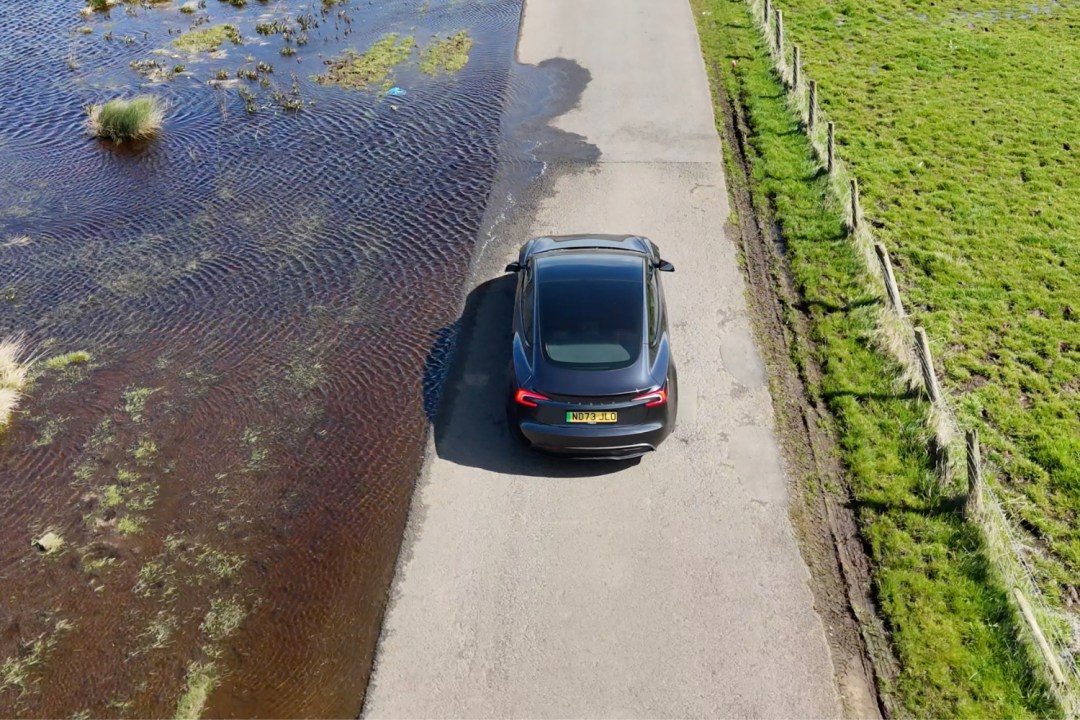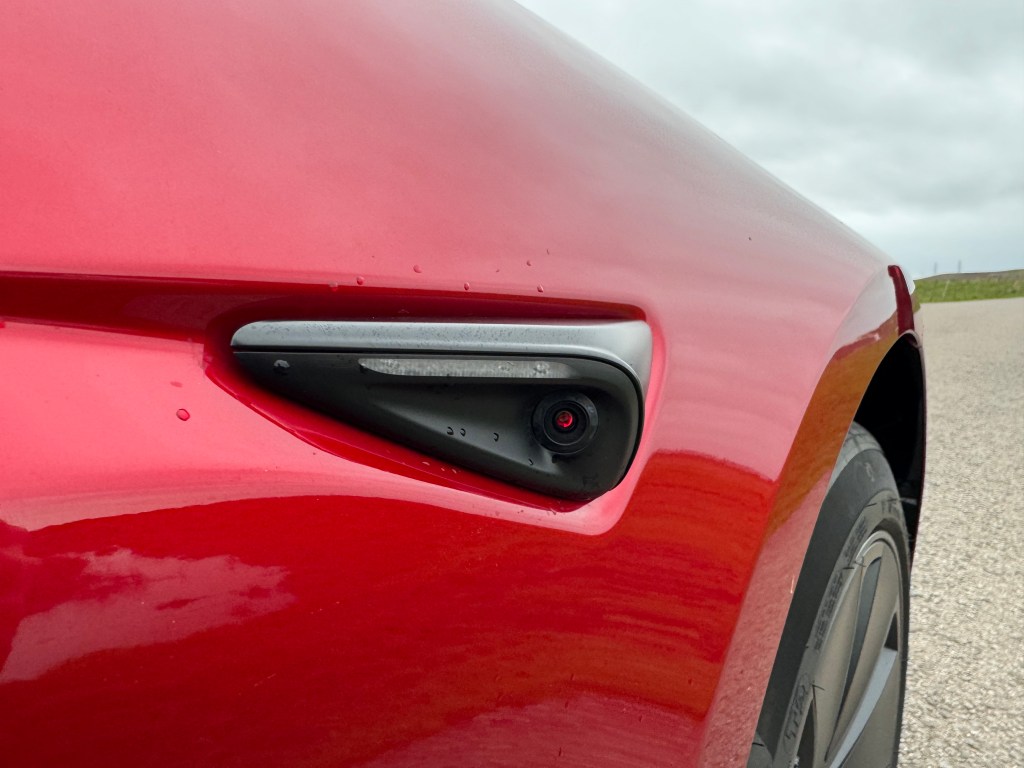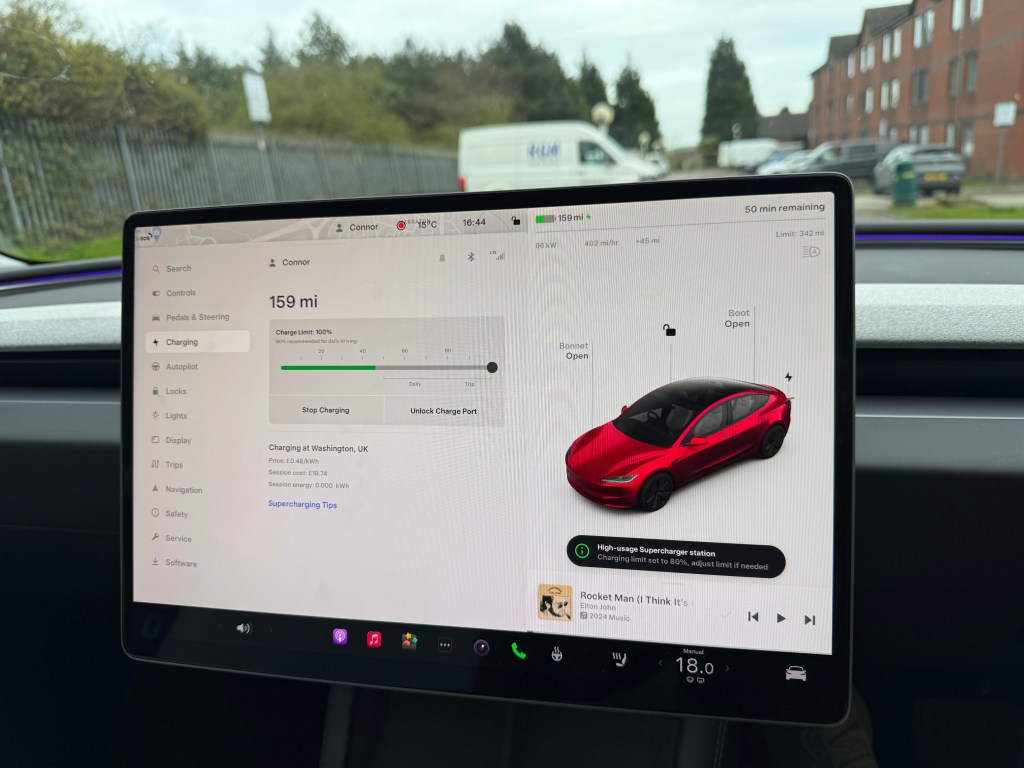Tesla Model 3 (2024) review: the new electric standard
This refined version of the best-selling electric car sets a new standard for EVs

Stuff Verdict
The new Tesla Model 3 sets a new standard for EVs. It fixes minor niggles with the previous generation, making for a near perfect car to get behind.
Pros
- Excellent, grippy handling
- Quieter and more comfortable than ever
- Fantastic software experience
- Impressive real-world range
Cons
- Auto-wipers are hit and miss
- Self-driving tech costs extra, but is less advanced than others
Introduction
I’ve driven quite a few electric cars, but always saw myself as somewhat of a doubter. The tech inside is fun and the launches are exciting, but the realities of charging are often quick to hit home. Those sticking points quickly went away when I started driving the Tesla Model 3, which has just been refreshed for 2024.
The Model 3 has a pretty sold history of being the best-selling electric car for some time now, and this updated version is exactly what you’d want from a mid-cycle refresh. It brings a revamped exterior, new additions inside the cabin, improvements to the drive, and all the tech you could shake a stick at. It’s not a groundbreaking rework of Tesla’s most popular car – but rather one that’ll fix minor irks you might have had with the previous Model 3.
All this comes for a pretty reasonable price, too. It starts at $35,990/£39,990, which is about right for an electric saloon. This hasn’t increased from the previous car, so you’re getting all of the improvements for the same buck. But with plenty of more affordable rivals in the mix, how does this latest Model 3 fare out on the roads?
The styling: refined and refreshed




The Model 3 has always been a bit of a looker, but the 2024 revamp elevates it to head-turner status. The refreshed car comes sporting two new shades – Ultra Red and Stealth Grey. The Ultra Red is more vivid than the previous red option, with a more metallic shine; Stealth Grey adds a darker and somewhat blueish hue to the grey tone from before. Both colours replace older shades and I think it looks a treat.
The already sleek, aerodynamic lines have been sharpened to better cut through the air, which makes it clear this is the new model, and also helps improve the battery’s range. The signature T logo on the tailgate has been traded out for a written Tesla badge, which gives the car a more premium feel, and follows other automakers such as Volvo. Tesla also now uses black trim instead of chrome for the door hands (which still don’t protrude) and other exterior bits.
Those eye-like headlights up front are just as bright as ever, but are now slimmer than before. They’re the perfect pairing for Tesla’s optional matrix adaptive main beams, which only turn off certain parts of the LEDs based on other cars around you. The brake lights are now part of the boot lid, with the fog lights at the bottom of the body. If you’re coming from a previous Model 3, note that you won’t get as much light when you open the boot.



Climbing inside a Model 3 is still like stepping onto the set of a sci-fi series, only now there are more premium materials dotted throughout the cabin. Wood panels are out, replaced by grey fabric trim. A new LED light bar wraps around the entire cabin, letting you customise the ambient lighting through the central touchscreen. It’s the most minimalist Tesla yet, particularly once you notice the lack of stalks near the steering wheel.
A new touchscreen in the rear adds climate controls, music controls, and additional entertainment for back passengers. Up front, a redesigned centre console adds dual wireless phone chargers, while the ventilated front seats ensure you’re cruising in comfort.
New acoustic glass for all the windows and enhanced sound-dampening materials reduce wind, road and exterior noise by a substantial 30%, making the Model 3’s interior a serene sanctuary on wheels.
The drive: it’s a road-hugger



From the moment you slide into the driver’s seat, which now automatically adjusts to your preferred settings, the car is ready to go. There’s no fumbling for keys or pressing of power buttons. A new Autoshift Out of Park feature automatically picks drive or reverse once you’re belted in, based on your surroundings.
Swapping traditional stalks for haptic buttons makes for a cleaner steering wheel design, and emphasises Tesla’s minimalist approach. The haptics are fantastic, making the buttons feel like you’re physically pushing something, and a handy divider makes it easy to tell them apart by touch alone. It can be confusing when the wheel is upside down on roundabouts, though.
Selecting gears also requires a swipe on the side of the screen closest to the driver’s seat now. It’s fairly intuitive, but can be clunky if you’re trying to manoeuvre. There are physical buttons next to the hazard lights for emergencies.
To put it simply, driving the Model 3 feels just right. This car rolls smoothly down the road, and grips the tarmac like it’s clinging on for dear life. A suspension retune and stiffer body mean it also handles rougher surfaces and potholes much better than before.
The handling feels more like that of a sports car than an electric saloon. You can pick between different steering modes and acceleration modes to further get the right fit. Regenerative braking remains a strong point, letting you largely drive with a just one pedal, but while other EVs can turn this off, that’s not an option here – so you’d better get used to it.
Brakes are responsive enough for regular driving, though perhaps not as sharp as you’d want in the dual motor variant, which can do 0-60mph in just 4.2 seconds. When you’re not gunning it between every traffic light, the 85kWh battery can manage a significant 390 miles of range per charge. I got closer to 340 miles in daily use, and a longer road trip depleted 300 miles to cover 264 miles of actual distance.
Tesla’s Supercharger network continues to make charging a breeze. The newest ones can go up to 250kW, so you can get to full in around 45 minutes. It’s the least inconvenient it can be on this car, although Superchargers are more spread apart in the UK than they are in the US.
The technology: top-tier tech



The centrepiece of this electric car is still its 15.4in touchscreen, which is fixed in a landscape position. It’s as responsive as ever, and now better integrated into the dash.
Tesla’s software is perhaps the most advanced in the game, with separate apps for entertainment and monitoring your car. Controls are easy to access from the bottom-right, and your speed is displayed in the top-right. I still missed physical buttons, though – you even need to tap the screen to open the glovebox. With no instrument cluster in front of the driver, I’d have liked a head-up display to make my speed easier to check while still keeping my eyes on the road. The automatic wipers could’ve kicked in sooner – and wiped faster – when it rained though.
The Tesla-designed stereo system has a whopping 17 speakers in the Long Range model, with Spotify, Apple Music, and Tidal integration. Even voice calls are clearer now thanks to the improved microphones.
You can control everything from the app, and even use your smartphone as the key (while still in your pocket).
Autopilot has long been a controversial topic among Tesla fans and Tesla haters. European safety laws have forced a rename on this side of the Atlantic, with Autosteer not able to change lanes for you. The Enhanced Autopilot package, a $3500/£3500 extra, can. This also includes Navigation on Autopilot and traffic light detection, which lets the car suggest what to do while following directions. You’ve got to keep your hands on the wheel the entire time, unlike Bluecruise on the Ford Mustang Mach-E – but Tesla’s system can be used anywhere. Whether it’s worth paying extra for is still a bit of a headscratcher.
Tesla Model 3 (2024) verdict


Despite some quirks, such as a confusing Autopilot system and dodgy auto-wipers, the Tesla Model 3 is a fantastic offering. It’s smoother than ever, quieter than ever, and does just about everything you’d want it to do.
Fixing all the irks of the previous Model 3 and leaving almost no new ones, it makes for a near perfect electric saloon for the masses.
Stuff Says…
The new Tesla Model 3 fixes minor niggles with the previous generation, making for a near perfect family saloon EV.
Pros
Excellent, grippy handling
Quieter and more comfortable than ever
Fantastic software experience
Impressive real-world range
Cons
Auto-wipers are hit and miss
Self-driving tech costs extra, but is less advanced than others
Tesla Model 3 (2024) technical specifications
| Powertrain | Dual motors (Rear-wheel drive or Long-range) |
| Battery | 60/85kWh |
| Power | 245/351bhp |
| Torque | 266/310lb-ft |
| 0-60mph | 5.8/4.2 sec |
| Top speed | 125mph |
| Range | 318/390 miles |
| Charge rate | 170/250kW |
| Cargo volume | 682 litres |